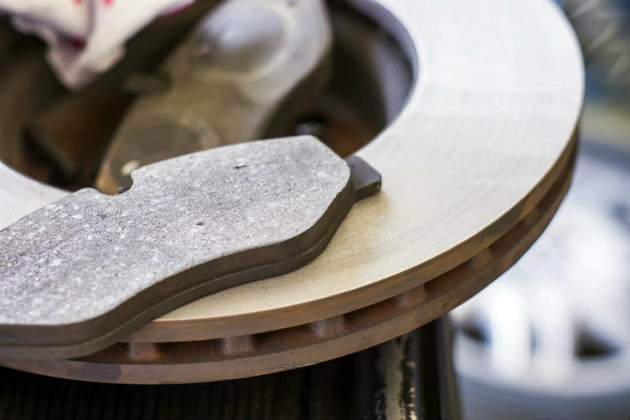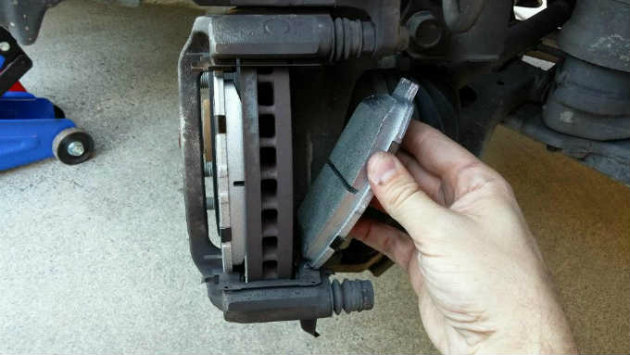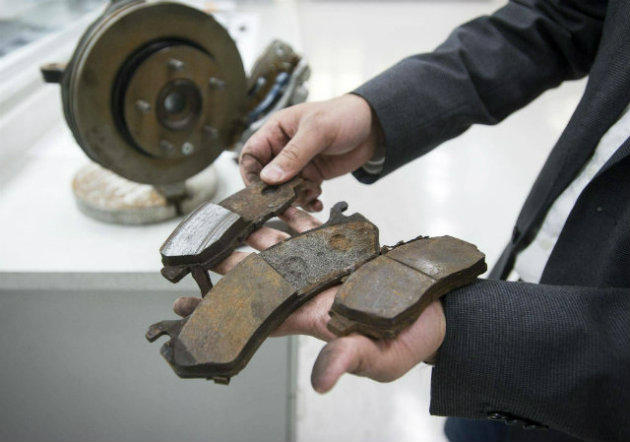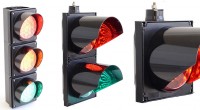The Core of Vehicle Braking Systems: How Important are Brake Pads?
Wooden blocks were once at the core of vehicle braking systems and this lasted until the 1890s. When faster cars hit the scene, wooden blocks were replaced by drum brakes which were standard up until 1898. This was the year disc brakes were introduced – with brake pads at their core. Modern day braking systems have become complex since they make use of multiple parts that work together. They also need to accommodate for a lot of safety features alongside the fundamental parts.

How Brake Pads Work
Although today’s braking systems are more advanced than ever, they still work the same way and make use of disc brake pads in order to stop the wheels from turning. This starts when you press the pedal which activates a cylinder that sends brake fluid to the calipers through hoses. This makes the calipers engage the pads, which are pushed against the rotor to apply pressure.
Since the rotor is what holds the wheel, the friction from the pads getting in contact with the rotor causes it to slow down and eventually stop. When you take the foot off the pedal, the whole process goes back in reverse and the wheels are free to move again. Of course, this all happens very fast which is why the material on the pad can get worn out.
Types of Friction Materials
Organic
This type of friction material is the softest but also very quiet. Organic pads are made of filler materials, high-temperature resins, rubbers and a small percentage of metal fibres. Organic pads are ideal for everyday driving and anything other than that makes them perform poorly. These pads replaced the infamous asbestos pads, which were manufactured up until 1997, due to health and safety concerns. This is why they are also known as non-asbestos or non-metallic.
There are also purely organic pads that use rubber or glass composites and others that use materials such as Kevlar which is six times stronger than steel. Kevlar makes for an organic pad that is not as limited when it comes to performance.

Semi-Metallic
These disc brake pads are used on the majority of cars as they are more heat and wear resistant than organic pads. They are made of copper, graphite, steel wire or wool and what are known as friction modifiers. Semi-metallic pads contain from 30% to 65% metal which makes them noisier and causes them to perform poorly in low temperatures.
Low-metallic
These pads are made with organic materials but still have about 10% to 30% metal in them, such as copper or steel. While they generate a lot of dust and noise they are an excellent choice when it comes to heat transfer.
Ceramic
Ceramic pads are rare since they are not as affordable but they generate less noise, wear down slowly and create less dust. These are made of ceramic fibres, non-ferrous filler materials and bonding agents. Ceramic pads are used on super cars since they have excellent heat transfer. This can be a hindrance in some instances, such as everyday driving, since the pad needs quite some time to warm up, which makes it difficult to perform efficiently.
When to Replace Disc Brake Pads?
Brake pads usually need to be replaced every 80,000 km but this number can range anywhere from 40,000 km to 110,000 km. This goes for pads that are not encountering any issues.

Warning Signs
Squealing & Screeching
This is usually the most common indicator for a faulty brake pad. These sounds are caused by a small metallic shim indicator that’s nested in the pad for this exact purpose. When the brakes are squealing and screeching, it is because they have been exposed to wet and damp conditions, or a layer of dust has formed on them.
Vibration
A pulsating or vibrating pedal can be a symptom of a warped rotor or a sign that your vehicle is not properly aligned. Warped rotors are the result of severe braking for a long period of time – when driving down a steep hill or when towing. You feel the vibrations since the car brake pad is not able to get a hold of the rotor’s uneven surface.
Pulling
If your vehicle is pulling to the side once you hit the brake pedal, it means that the brake linings are worn out unevenly. Pulling could also mean that there is a foreign object in the brake fluid. This requires the brakes to be adjusted or the brake fluid to be changed.
Grinding & Growling
These noises occur when you’ve completely worn down the car brake pad which means that the disc and caliper are rubbing together. This can mean that the pads are damaged beyond replacement which can also cause the rotors to become uneven. Uneven rotors will need to be turned or replaced.
Fading (Less Responsive)
If the brake pedal sinks when you press it, it means that there is a leak in the braking system. It could be either a break fluid leak or an air leak. To tell them apart, look under the car when it’s been sitting for a while – if there is a puddle of slimy fluid that looks similar to motor oil, then it’s to do with the break fluid.



